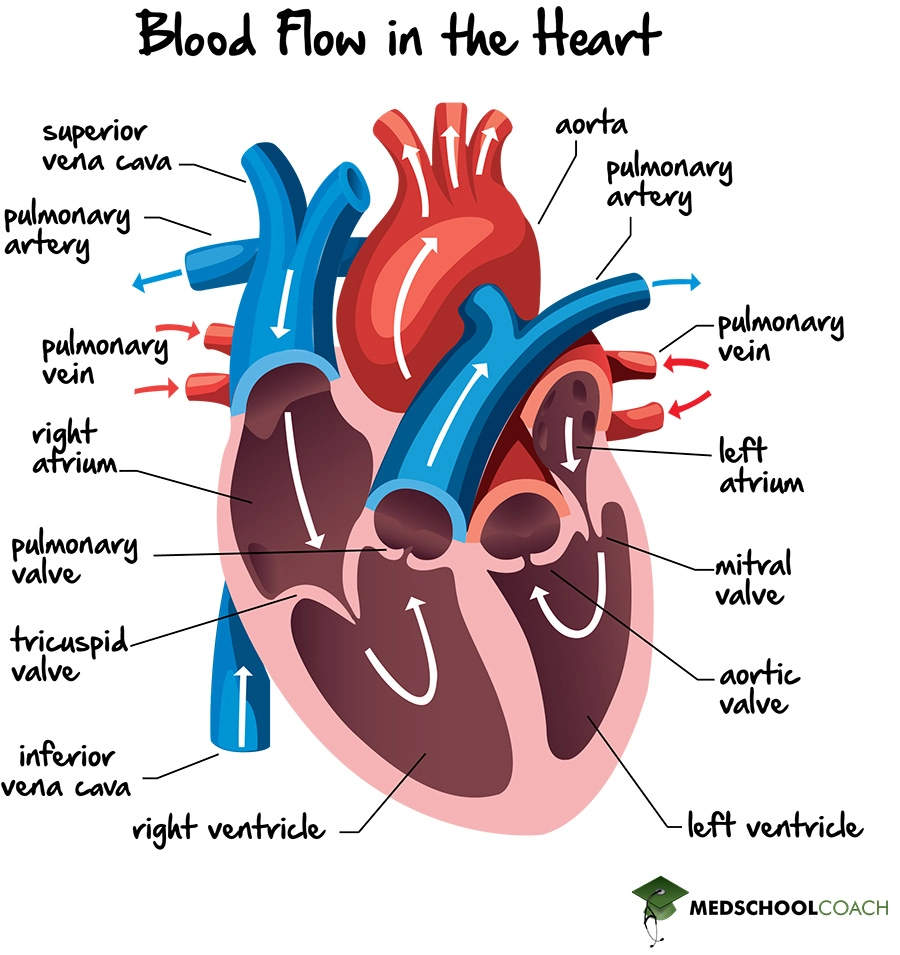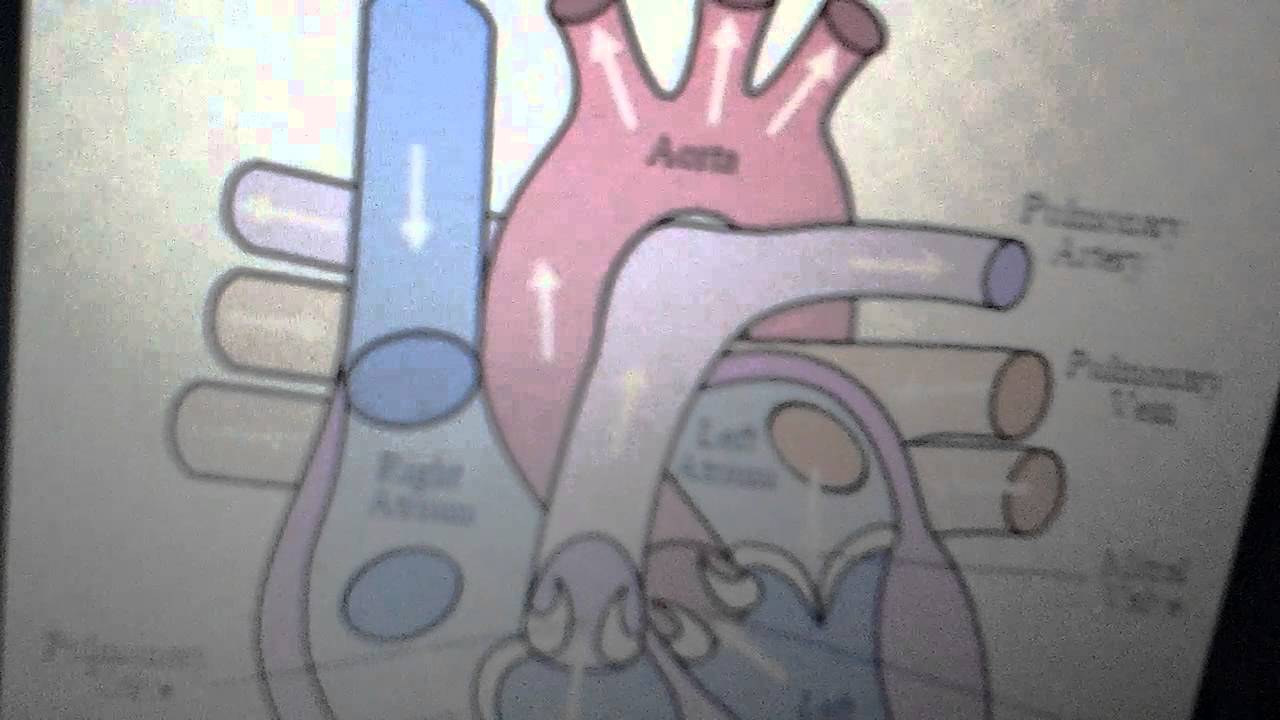The heart is an incredible organ that serves as the powerhouse of the circulatory system. Understanding how the heart pumps blood is essential to grasping not just how our bodies work but also why heart health is so crucial. Did you know that the average heart beats about 100,000 times a day? That's a lot of work! In this post, we’ll dive deep into the heart's function and explore its anatomy to help you appreciate this vital organ even more.
The Anatomy of the Heart

The anatomy of the heart is as fascinating as its function. To appreciate how blood circulates throughout the body, it’s important to familiarize yourself with the heart’s structure. Let’s break it down:
- Chambers of the Heart: The heart consists of four chambers:
- Right Atrium: Receives deoxygenated blood from the body through veins called superior and inferior vena cava.
- Right Ventricle: Pumps deoxygenated blood to the lungs via the pulmonary arteries.
- Left Atrium: Receives oxygenated blood from the lungs through the pulmonary veins.
- Left Ventricle: Pumps oxygenated blood to the rest of the body via the aorta.
- Heart Valves: The heart contains four valves that ensure blood flows in the right direction:
- Tricuspid Valve: Between the right atrium and right ventricle.
- Pulmonary Valve: Between the right ventricle and pulmonary arteries.
- Mitral Valve: Between the left atrium and left ventricle.
- Aortic Valve: Between the left ventricle and the aorta.
- Heart Walls: The heart has three main layers:
- Epicardium: The outer layer that protects the heart.
- Myocardium: The muscular middle layer responsible for pumping blood.
- Endocardium: The inner layer that lines the heart chambers and valves.
The heart is also surrounded by a fluid-filled sac called the pericardium, which helps reduce friction as the heart beats. Each component of the heart works harmoniously to ensure efficient blood flow, making it a remarkable organ.
Understanding the anatomy of the heart not only highlights its structure but also sheds light on how vital it is for our overall health. Maintaining a healthy heart is crucial, and knowing how it operates can encourage us to take better care of it.
Also Read This: How to Make CV in MS Word 2007: Step-by-Step Guide on Dailymotion
3. How Blood Circulation Works

Understanding blood circulation is like unraveling a fascinating story of how our body works. It’s not just about the heart; it's a complex system that includes blood vessels and blood itself, constantly working together to keep us alive and functioning.
The circulatory system can be divided into two main circuits: the systemic circulation and the pulmonary circulation. Let’s break it down!
- Systemic Circulation: This is the journey that oxygenated blood takes from the heart to the rest of the body. After oxygen passes from the lungs into the blood, it travels back to the heart through the pulmonary veins. The heart then pumps this oxygen-rich blood out through the aorta to feed all the organs and tissues.
- Pulmonary Circulation: This is where the magic happens in the lungs. Deoxygenated blood returns to the heart via the superior and inferior vena cavae. Once the heart collects this blood, it pumps it to the lungs through the pulmonary arteries. Here, carbon dioxide is exchanged for oxygen during the breathing process. Then, the freshly oxygenated blood travels back to the heart, ready to be circulated.
This process operates like a well-oiled machine, where various components such as arteries, veins, and capillaries play pivotal roles:
- Arteries: These blood vessels carry oxygen-rich blood away from the heart. They are robust and elastic, which helps withstand the high pressure of blood being pumped.
- Veins: Veins bring deoxygenated blood back to the heart and are generally thinner than arteries. They also have valves that prevent blood from flowing backward.
- Capillaries: These tiny vessels are where the actual exchange of gases occurs. They connect arteries and veins and allow oxygen, nutrients, and waste to be exchanged between blood and tissues.
The entire circulatory system is essential for transporting nutrients, hormones, and waste products, playing a crucial role in maintaining homeostasis within the body. So, every time your heart beats, think about the incredible journey your blood takes!
Also Read This: How to Watch Dailymotion on Amazon Fire Stick
4. The Pumping Mechanism of the Heart
Now that we have a grip on how blood circulation works, let’s dive into the heart’s fascinating pumping mechanism. The heart itself is an extraordinary muscle, often referred to as a pump, and it performs its functions with precision and rhythm!
The heart consists of four chambers: two upper chambers called atria and two lower chambers known as ventricles. The pumping action can be broken down into two main phases: diastole and systole.
| Phase | Description |
|---|---|
| Diastole | This is the relaxation phase. During diastole, the heart chambers fill with blood. The atria fill with returning blood, which then flows into the ventricles. |
| Systole | This is the contraction phase. The ventricles contract, squeezing blood out of the heart – the right ventricle sends blood to the lungs, while the left ventricle pumps it to the body. |
But how does the heart know when to contract and relax? This is where the cardiac conduction system comes into play!
The conduction system generates electrical impulses that spread throughout the heart muscle, triggering contractions. The main components include:
- SA Node (Sinoatrial Node): Often referred to as the heart's natural pacemaker, it initiates each heartbeat, creating a signal that guides the atria to contract.
- AV Node (Atrioventricular Node): This node receives the impulse from the SA node and delays it slightly to ensure the atria have completed contracting before the ventricles begin.
- Bundle of His and Purkinje Fibers: These carry the impulse into the ventricles, allowing them to contract simultaneously and pump blood efficiently.
So, the next time you feel your heart beating, remember the incredible and synchronized efforts of the cardiac conduction system and the heart’s chambers working tirelessly to keep blood flowing and your body thriving!
Also Read This: How to Make Shisha at Home with a Bottle: Creative DIY Video on Dailymotion
5. Factors Affecting Heart Function
The human heart is a remarkable organ, tirelessly pumping blood throughout our bodies. However, various factors can influence how effectively it functions. Understanding these factors is crucial not only for those with heart-related conditions but also for anyone looking to maintain a healthy lifestyle. Let's dive into some of the most significant factors affecting heart function.
1. Age
As we age, our heart undergoes various changes. The heart muscles may become stiffer, and the valves might not work as efficiently. This natural aging process can lead to a decrease in the heart's pumping ability over time.
2. Physical Activity
Regular physical activity has profound effects on heart health. Engaging in aerobic exercises, strength training, and flexibility workouts helps maintain the heart's efficiency. Conversely, a sedentary lifestyle can increase the risk of heart disease and negatively impact heart function.
3. Diet
What we eat plays a fundamental role in heart health. Diets high in saturated fats, trans fats, cholesterol, and sodium can lead to conditions like atherosclerosis, which can hinder the heart's ability to pump blood effectively. A heart-healthy diet is rich in fruits, vegetables, whole grains, and lean proteins.
4. Stress
Chronic stress can negatively impact heart function by increasing heart rate and blood pressure. It's essential to manage stress through various techniques, such as mindfulness, yoga, or hobbies, to promote a healthier heart.
5. Genetics
Genetics can also influence heart health. Family history of heart disease can increase the risk of developing heart-related conditions. Knowing your family's medical history can help in taking proactive steps to safeguard your heart health.
6. Smoking and Alcohol Consumption
Smoking is one of the most significant risk factors for heart disease. It damages blood vessels and decreases oxygen in the blood, putting extra strain on the heart. Similarly, excessive alcohol can lead to high blood pressure and irregular heartbeats. Moderation is key.
Understanding these factors can empower you to make informed choices for your heart health. Whether you're seeking to adopt a more active lifestyle or make dietary changes, every step counts in ensuring your heart functions optimally!
Also Read This: How to Make a French Braid on Yourself
6. Educational Resources on Dailymotion
When it comes to learning more about how the heart functions and the various intricacies of cardiovascular health, Dailymotion is an excellent platform filled with rich educational content. Here’s a breakdown of some of the resources available that can enrich your understanding.
1. Documentaries and Short Films
Dailymotion hosts a plethora of documentaries and short films that explore the human circulatory system in-depth. These visually engaging materials can help demystify complex processes such as how the heart pumps blood and how it responds to different challenges.
2. Expert Talks and Lectures
You can find talks from cardiologists and health experts who share insights into heart function, prevention strategies for heart disease, and the latest research in cardiac health. These lectures are often accessible and presented in a way that makes them easier to understand for viewers of all backgrounds.
3. Animated Explainers
Many creators on Dailymotion have produced animated videos that illustrate heart functioning. These animations can be particularly helpful for visual learners, as they often break down complex anatomical features and physiological processes into digestible segments.
4. Health Tips and Advice
Additionally, there are numerous health channels that focus on providing tips for maintaining heart health. From dietary advice to exercise recommendations, these resources can be valuable in making lifestyle changes that support a healthier heart.
5. Community Forums
Dailymotion also fosters a sense of community where viewers can share their experiences, ask questions, and offer support to one another. Engaging with others who are on similar journeys can provide motivation and additional insights into heart health management.
Always remember, while educational resources are vital for gaining knowledge, consulting with healthcare professionals is crucial for personalized advice. So, dive into the wealth of information available on Dailymotion and empower yourself to take charge of your heart health!
Conclusion and Importance of Heart Health
Understanding how the heart pumps blood is crucial for recognizing the importance of maintaining a healthy cardiovascular system. The heart, a vital organ, serves as the body's main pump, circulating oxygenated blood to tissues and organs while also aiding in the removal of carbon dioxide and other waste products.
Key Points to Consider:
- Cardiovascular Health: Regular exercise, a balanced diet, and routine health check-ups play a significant role in keeping the heart functioning optimally.
- Risk Factors: Factors such as high blood pressure, high cholesterol, smoking, and obesity can jeopardize heart health.
- Awareness: Understanding symptoms of heart issues, like chest pain or irregular heartbeats, is essential for timely intervention.
By grasping the mechanisms behind how the heart works and the impact of lifestyle on heart health, individuals can make informed decisions that contribute to a longer, healthier life. Incorporating heart-healthy habits can significantly reduce the risk of heart disease, which remains one of the leading causes of death globally.
In conclusion, prioritizing heart health through education, preventive measures, and proactive lifestyle choices is vital for overall well-being and longevity.
 admin
admin








